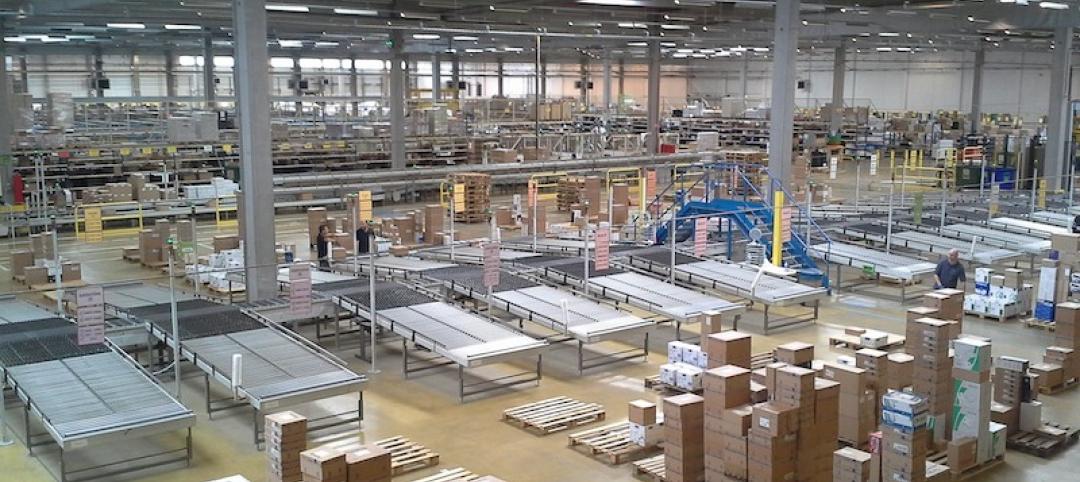A study by transportation, economics and urban planning experts has found that ridesharing and ridesourcing services using autonomous vehicles (AV) could shift millions of drivers away from personal cars in major U.S. cities.
“Driverless Future: A Policy Roadmap for City Leaders,” the study prepared by Arcadis, HR&A Advisors and Sam Schwartz Consulting, shows that the move to ridesharing and ridesourcing services that don’t have a driver could cause a shift of up to 60 percent (3.6 million cars) from traditional to autonomous vehicles in the New York metro area alone over the next 15-20 years.
The Los Angeles metro area could see a shift of up to 44 percent (2.2 million cars) and the Dallas-Ft. Worth metro area could see a shift of up to 31 percent (nearly 1 million cars).
The shift of nearly 7 million drivers to autonomous vehicles across three diverse metro areas illustrates how cities across the U.S. could be greatly impacted and reveals the significant effect of driverless services contemplated by companies such as Uber and Lyft.
To help cities prepare for such profound changes in daily life, Arcadis, HR&A Advisors and Sam Schwartz Consulting are offering a policy road map for complex issues related to autonomous vehicles and their potential impact on equity, public transit, parking, land use, and real estate development.
To prepare for this driverless future, the report identifies six priorities for city leaders:
- Leverage technology to enhance mobility: Cities and private partners should embrace smartcards, open data, and universal apps. This would allow riders to compare, book, and pay for trips that combine buses, trains, bikes and ridesharing. Pilot programs are already in place in cities ranging from Los Angeles to Helsinki.
- Prioritize and modernize public transit: Cities and transit agencies should focus on high-ridership, high-frequency light rail and bus rapid transit systems while driverless shuttles provide first- and last-mile connections for riders. Similar shuttles are already being tested in London and Singapore.
- Implement dynamic pricing: To reduce congestion and create a level playing field between public and private transportation, cities should consider dynamic road pricing plans that vary by origin and destination, number of passengers, congestion, and/or household income. This can be implemented through proven tools such as congestion pricing, zone pricing, vehicle-miles traveled fee, etc.
- Plan for mixed-use, car-light neighborhoods: AV can unlock demand for living and working in mixed-use neighborhoods – whether they are urban or suburban. To shape this demand, cities need to plan for and incentivize mixed-use development, overhaul parking requirements, and reevaluate new transit projects.
- Encourage adaptable parking: Fewer personal cars means fewer parking spaces, especially in city centers where much of the land use is taken by parking garages or lots. Parking garages need to be built with housing or office conversion in mind and include level floors, higher ceiling heights and centralized ramps. These future-proof garages are already being contemplated in Boston and Nashville.
- Promote equitable access to new jobs and services: To support disadvantaged populations, cities must encourage public and private operators to provide alternative payment methods, access via dial-a-ride and equitable service coverage. Cities and private partners must also create new employment and training opportunities for drivers and others in legacy occupations.
The full report can be found here.
Related Stories
Multifamily Housing | Sep 1, 2021
Top 10 outdoor amenities at multifamily housing developments for 2021
Fire pits, lounge areas, and covered parking are the most common outdoor amenities at multifamily housing developments, according to new research from Multifamily Design+Construction.
Industry Research | Aug 19, 2021
BD+C Market Intelligence Reports
Exclusive research, data, and trends reports from the editors of Building Design+Construction.
Resiliency | Aug 19, 2021
White paper outlines cost-effective flood protection approaches for building owners
A new white paper from Walter P Moore offers an in-depth review of the flood protection process and proven approaches.
Multifamily Housing | Jul 7, 2021
Make sure to get your multifamily amenities mix right
One of the hardest decisions multifamily developers and their design teams have to make is what mix of amenities they’re going to put into each project. A lot of squiggly factors go into that decision: the type of community, the geographic market, local recreation preferences, climate/weather conditions, physical parameters, and of course the budget. The permutations are mind-boggling.
Digital Twin | May 24, 2021
Digital twin’s value propositions for the built environment, explained
Ernst & Young’s white paper makes its cases for the technology’s myriad benefits.
Industry Research | May 20, 2021
Latest ULI report forecasts robust real estate rebound
It’s going to take some time, though, for the office sector to recover
Industry Research | Apr 9, 2021
BD+C exclusive research: What building owners want from AEC firms
BD+C’s first-ever owners’ survey finds them focused on improving buildings’ performance for higher investment returns.
Market Data | Feb 24, 2021
2021 won’t be a growth year for construction spending, says latest JLL forecast
Predicts second-half improvement toward normalization next year.
Healthcare Facilities | Feb 18, 2021
The Weekly show, Feb 18, 2021: What patients want from healthcare facilities, and Post-COVID retail trends
This week on The Weekly show, BD+C editors speak with AEC industry leaders from JLL and Landini Associates about what patients want from healthcare facilities, based on JLL's recent survey of 4,015 patients, and making online sales work for a retail sector recovery.
Market Data | Jan 19, 2021
2021 construction forecast: Nonresidential building spending will drop 5.7%, bounce back in 2022
Healthcare and public safety are the only nonresidential construction sectors that will see growth in spending in 2021, according to AIA's 2021 Consensus Construction Forecast.

















